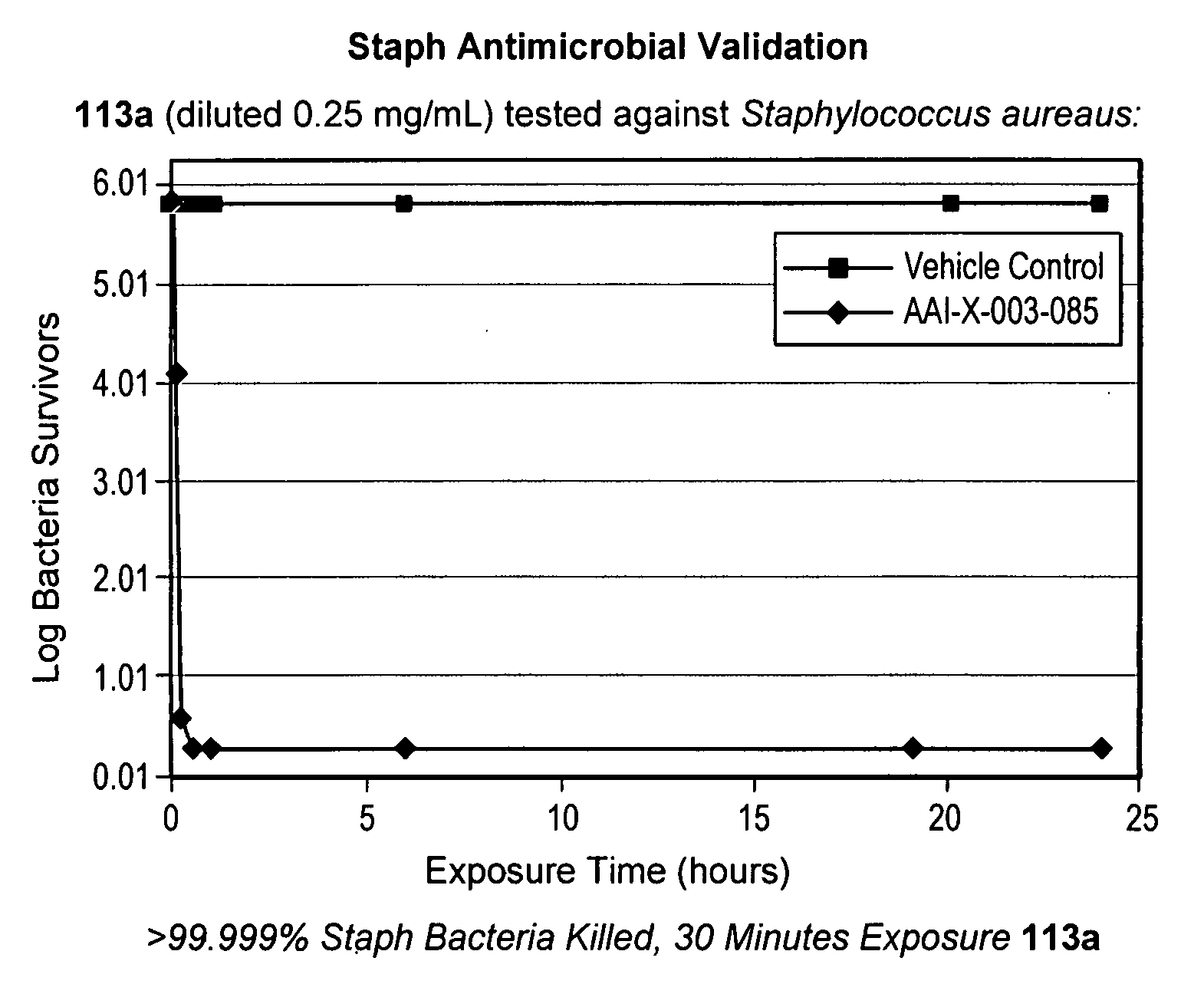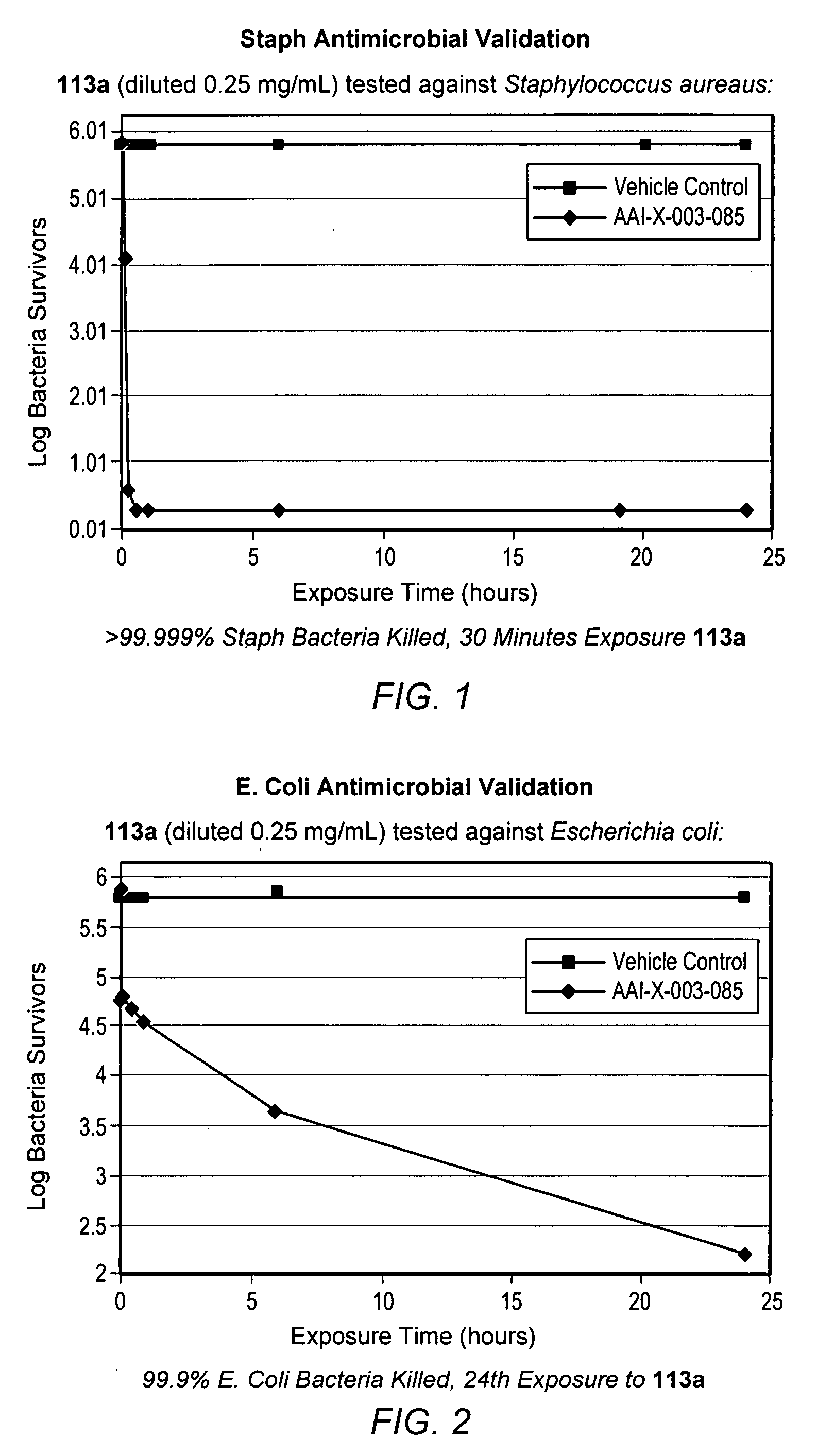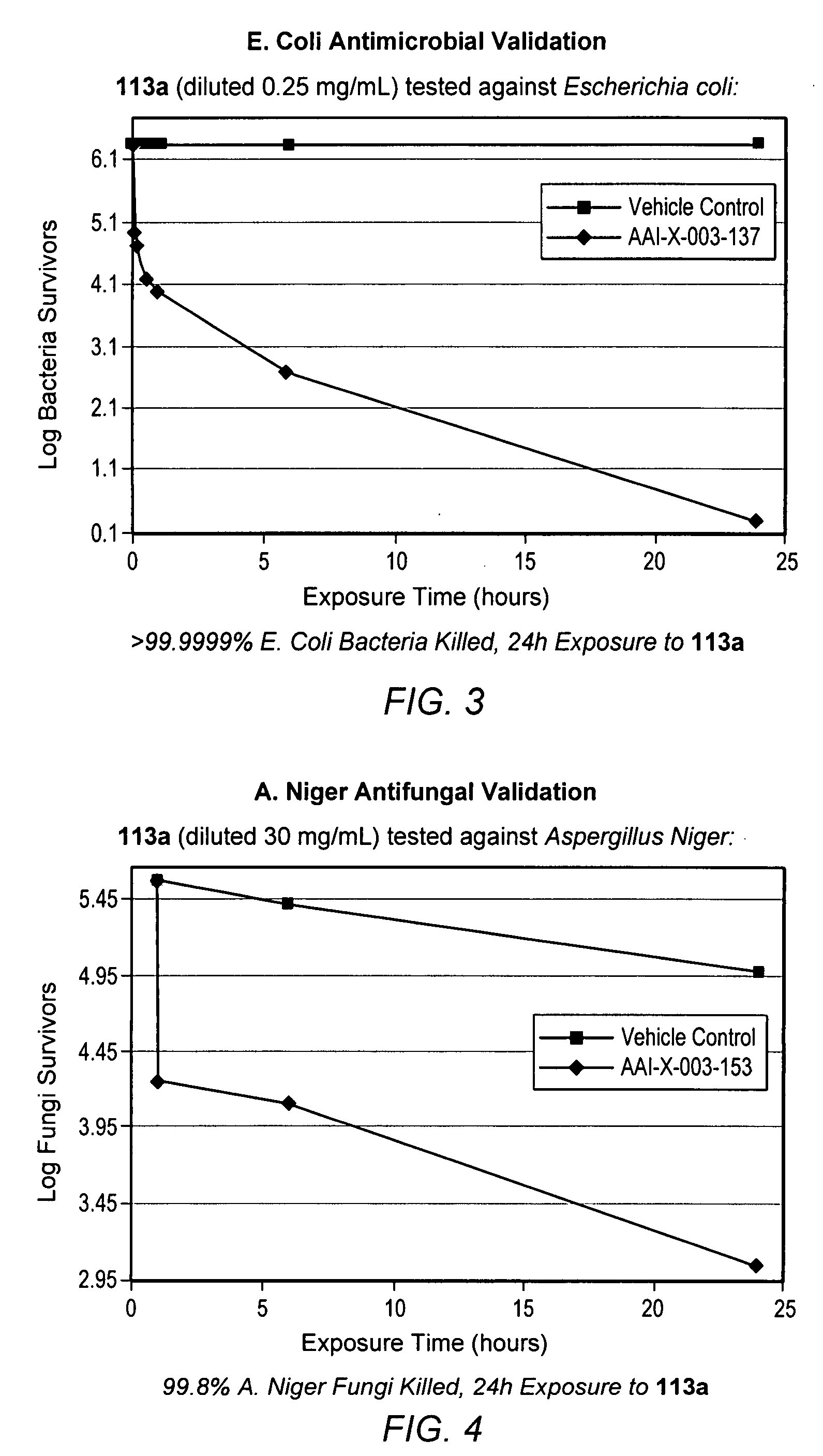Methods and systems for preparing an antimicrobial composition
a technology of antimicrobial composition and composition, which is applied in the field of self-cleaning and/or antimicrobial composition, can solve the problems of loss of essential functions that rely on intact cell membrane architecture, such as respiratory activity, and the inability to always resist antimicrobials, so as to and increase the solubility of the compound
- Summary
- Abstract
- Description
- Claims
- Application Information
AI Technical Summary
Benefits of technology
Problems solved by technology
Method used
Image
Examples
examples
Time Kill Test Assay for Antimicrobial Agents
[0574] Test Substance Preparation: A 1.0 mL volume of DMSO was placed into a sterile vessel and vortex mixed for 10-15 seconds. Immediately following the mixing of the DMSO, 0.025 g of the test substance powder was added to the sterile vessel and vortex mixed for 10-15 seconds to make a stock solution. The stock solution was then combined with 9.9 mL of filter sterilized deionized water, vortex mixed for 10-15 seconds and 0.1 mL of the solution was discarded resulting in a total volume of 9.9 mL and a test substance concentration of 0.25 mg / mL.
[0575] Experimental Design: A suspension of bacterial cells was exposed to the test substance for specified contact times. After exposure, an aliquot of the suspension was transferred to a neutralizing subculture media and assayed for survivors. Appropriate purity, sterility, initial suspension population control and neutralization controls were performed.
[0576] Test Organisms: Test organisms inc...
PUM
 Login to View More
Login to View More Abstract
Description
Claims
Application Information
 Login to View More
Login to View More - R&D
- Intellectual Property
- Life Sciences
- Materials
- Tech Scout
- Unparalleled Data Quality
- Higher Quality Content
- 60% Fewer Hallucinations
Browse by: Latest US Patents, China's latest patents, Technical Efficacy Thesaurus, Application Domain, Technology Topic, Popular Technical Reports.
© 2025 PatSnap. All rights reserved.Legal|Privacy policy|Modern Slavery Act Transparency Statement|Sitemap|About US| Contact US: help@patsnap.com



